1 of 12
Download to read offline

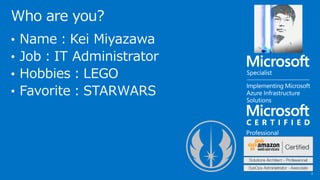

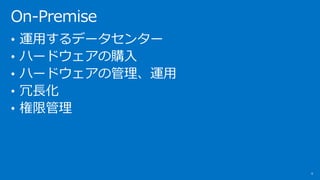
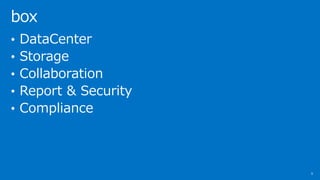
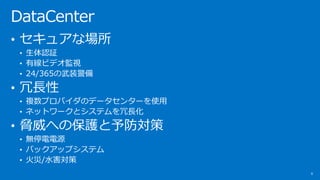
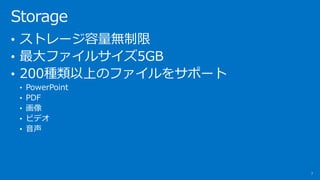
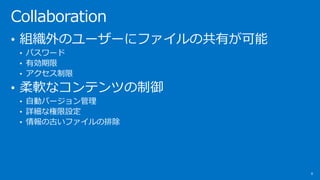


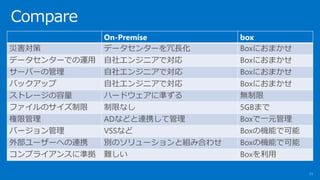

Ad
Recommended
Nutanix ∏≈“™ΩBΩÈ
Nutanix ∏≈“™ΩBΩÈSatoshi Shimazaki
?
Nutanix§À§ƒ§§§∆§Œ∏≈“™ΩBΩÈŸY¡œ§«§π°£
§≥§ŒŸY¡œ§œ—u∆∑§Œ∏¸–¬§À∞ȧ√§∆ÀÊïr•¢•√•◊•«©`•»§π§Î”Ë∂®§«§π°£
◊ÓΩK∏¸–¬£∫2016ƒÍ12‘¬1»’Datrium DVX •«©`•ø§ŒÕÍ»´–‘§Ú≥£ïr÷π©°æ•∆•Ø•À•´•Î•Ï•›©`•»°ø
Datrium DVX •«©`•ø§ŒÕÍ»´–‘§Ú≥£ïr÷π©°æ•∆•Ø•À•´•Î•Ï•›©`•»°ø’˝√˜ ”¯B
?
Tier-1•◊•È•√•»•’•©©`•‡§À§™§§§∆§œ•∑•π•∆•‡ƒ⁄§«∏Òº{§µ§Ï§ø•«©`•ø§Œ’˚∫œ–‘§œ∑«≥£§À÷ÿ“™§«§π°£•«•§•»•Í•¶•‡§œ•«©`•ø§Œ–≈Óm–‘§À§ƒ§§§∆§œ∏fl–‘ƒ‹§ÚæS≥÷§∑§ƒ§ƒ∑«≥£§Àæd√‹§Àó ‘^§∑§∆§§§fi§π°£
—u∆∑§Œª˘±æ“™Àÿ§Ú‘O”ã§∑§øµ±≥ı§´§Èøº§®°¢∂‡§Ø§Œ•Í•Ω©`•π§»øº§®§Úœ¥æö§µ§Ï§ø•«©`•ø•¡•®•√•Ø§¨––§®§Îà‘¿Œ§ •∑•π•∆•‡§ÚÈ_∞k§π§Î§ø§·§ÀÕ∂ŸY§∑§fi§∑§ø°£
1§ƒ§Œ∑Ω∑®§«§œ Æ∑÷§ –≈Óm–‘§Ú±£§∆§ §§§»øº§®°¢∂‡§Ø§Œºº–g§ÚΩM§fl∫œ§Ô§ª§∆åg¨F§µ§Ï§fi§∑§ø°£
§≥§Œ•€•Ô•§•»•⁄©`•—©`§«§œDVX§«§…§Œ§Ë§¶§À•«©`•ø©`§Œ–≈Óm–‘§Úåg¨F§∑§∆§§§Î§´§Ú’h√˜§∑§fi§π°£Nutanix@Open Source Conference 2015 Tokyo/Fall
Nutanix@Open Source Conference 2015 Tokyo/FallSatoshi Shimazaki
?
Open Source Conference 2015 Tokyo/Fall§Œ∞k±ÌŸY¡œ§«§π°£∞µ∫≈ªØ•≠©`°¢§…§≥§«π‹¿Ì§∑§fi§π§´£ø HyTrust KeyControl§«∫ÜÖg?∞≤–ƒ•≠©`π‹¿Ì
∞µ∫≈ªØ•≠©`°¢§…§≥§«π‹¿Ì§∑§fi§π§´£ø HyTrust KeyControl§«∫ÜÖg?∞≤–ƒ•≠©`π‹¿Ì÷Í Ωª·…Á•Ø•È•§•‡
?
?•fi•∑•Û§Ú∞µ∫≈ªØ§∑°¢•ª•≠•Â•Í•∆•£•›•Í•∑©`§Úú∫§ø§∑§ø§§°£
?vSphere 6.5òÀú §Œ∞µ∫≈ªØôCƒ‹§Ú π”√§∑§ø§§°£
?∞µ∫≈ªØ◊¥õr§Ú“ª‘™π‹¿Ì§∑§ø§§°£
§≥§Ï§È§Œ“™Õ˚§œ§¥§∂§§§fi§ª§Û§´°£
±æ•ª•fl• ©`§«§œ°¢°∏HyTrust KeyControl°π§»§§§¶•Ω•’•»•¶•ß•¢§Ú§¥ΩBΩȧµ§ª§∆Ìî§≠§fi§π°£
HyTrust KeyControl§œVMware§¨’J∂®§∑§∆§§§Î∞µ∫≈•≠©`π‹¿Ì•µ©`•–(KMS)§Œ1§ƒ§«§¢§Í°¢
vSphere 6.5§´§È◊∑º”§µ§Ï§øòÀú §Œ•®©`•∏•ß•Û•»•Ï•π§ ∞µ∫≈ªØôCƒ‹§Œ•≠©`π‹¿Ì§Àåùèͧ∑§∆§§§fi§π°£
§fi§ø°¢HyTrustÇ»§«”√“‚§∑§∆§§§Î•®©`•∏•ß•Û•»§Ú π”√§π§Î§≥§»§«°¢vSphere 6.5“‘Õ‚§ŒÅ¢œÎ≠hæ≥§‰ŒÔ¿Ì≠hæ≥°¢
•Ø•È•¶•…≠hæ≥…œ§Œ•fi•∑•Û§Ú∞µ∫≈ªØ§∑°¢•≠©`π‹¿Ì§‚––§®§fi§π°£
±æ•ª•fl• ©`§«§œHyTrust KeyControl§Œ∏≈“™§‰Ãÿè’§Ú°¢—u∆∑•«•‚§‚Ωª§®§∆§¥ΩBΩȧ§§ø§∑§fi§π°£Nutanix Community Meetup #1 - Nutanix»ÎÈTæé
Nutanix Community Meetup #1 - Nutanix»ÎÈTæéSatoshi Shimazaki
?
Nutanix Community Meetup #1§Œ∞k±ÌŸY¡œ§«§π°£Dvx update 20180605
Dvx update 20180605’˝√˜ ”¯B
?
Datrium DVX§œ»’°©flMªØ§∑§∆§§§fi§π°£2018ƒÍ4‘¬§À§œOracle RAC§ÿ§Œåùèͧ‰•·•¨•Ø•È•¶•…§ÿ§Œ•–•√•Ø•¢•√•◊§Ú∞k±Ì§∑§fi§∑§ø§¨°¢ΩÒªÿ§œŒÔ¿Ì•µ©`•–©`§Ú•µ•›©`•»§∑°¢PostgreSQL§¨Ñ”◊˜§π§Î§Ë§¶§À§ §Í§fi§∑§ø°£
HCI§Œ◊ÓΩKflMªØ–Œ§»§‚—‘§®§ÎDatrium§¨°¢ΩÒ§fi§«§ŒHCI§«§œ“ä§ø§≥§»§Œ§ §§§Ë§¶§ –¬§∑§§ôCƒ‹§Ú§¥ΩBΩȧ∑§fi§π°£Datrium overview and technology foundations
Datrium overview and technology foundations datriumjapan
?
2010ƒÍ§ÀGoogle§¨Ã·≥™§∑§ø•π•±©`•Î•¢•¶•»•µ©`•–©`§Œ∞kœÎ§´§È…˙§fi§Ï§ø•œ•§•—©`•≥•Û•–©`•∏•…•§•Û•’•È•π•»•È•Ø•¡•„©`£®HCI£©§œ°¢–Ï°©§À•®•Û•ø©`•◊•È•§•∫IT§ÀΩ˛Õ∏§∑§∆§≠§fi§∑§ø°£ΩÒ··§œ¥Û§≠§ØIT§Úâ‰∏Ô§µ§ª§Î∆±¨Ñà§À§ §Î§≥§»§œ√˜§È§´§«§π°£
§∑§´§∑§ §¨§È°¢HCI§Œ•¢•◊•Í•±©`•∑•Á•Û”√Õ槨§fi§¿œfi§È§Ï§∆§§§Î§≥§»§‚ ¬åg§«§π°£•µ©`•–©`§»•π•»•Ï©`•∏§ÚºØºs§π§Î ÷∑®§¨°¢•—•’•©©`•fi•Û•π§»“郣§Œíàèà§À◊∑Àʧ«§≠§ §§§≥§»§‚¿Ì”…§Œ“ª§ƒ§«§π°£§fi§ø°¢•≥•Û•‘•Â©`•∆•£•Û•∞§»•π•»•Ï©`•∏§ÚΩy∫œ§∑§∆§‚°¢•«©`•ø§Œ±£◊o£®•–•√•Ø•¢•√•◊£©§œÑe§Œ•Ω•Í•Â©`•∑•Á•Û§ÀÓm§È§∂§Î§Úµ√§ §§§≥§»§‚’nÓ}§»§ §√§∆§§§fi§π°£
§≥§ŒŸY¡œ§«§œHCI§Œ§≥§Ï§´§È§Œ§¢§Î§Ÿ§≠◊À§À§ƒ§§§∆§¥’h√˜§§§ø§∑§fi§π°£ ∞ø≥ß∞‰2013.≥¶±Ù¥«≥‹ªÂ£¿∞ø≤ı≤π∞Ï≤π
∞ø≥ß∞‰2013.≥¶±Ù¥«≥‹ªÂ£¿∞ø≤ı≤π∞Ï≤πSatoshi Shimazaki
?
∞ø≥ß∞‰2013.≥¶±Ù¥«≥‹ªÂ£¿∞ø≤ı≤π∞Ï≤π§Œ•∑•»•Í•√•Ø•π§Œ•ª•√•∑•Á•ÛŸY¡œ§«§πET2018 EnOcean Gateway Smart Japan Alliance
ET2018 EnOcean Gateway Smart Japan AllianceAtomu Hidaka
?
Easy Edge Computing with Azure and EnOcean Gateway•§•Û•’•È•®•Û•∏•À•¢§ §È÷™§√§∆§™§≠§ø§§ Å¢œÎªØ≠hæ≥§»•π•»•Ï©`•∏§Œ–¬§∑§§–Œ
•§•Û•’•È•®•Û•∏•À•¢§ §È÷™§√§∆§™§≠§ø§§ Å¢œÎªØ≠hæ≥§»•π•»•Ï©`•∏§Œ–¬§∑§§–ŒSatoshi Shimazaki
?
•™©`•◊•Û•Ω©`•π•´•Û•’•°•Ï•Û•π 2015 √˚π≈Œ›§Œ∞k±ÌŸY¡œ§«§π°£
•§•Û•’•È•®•Û•∏•À•¢§ §È÷™§√§∆§™§≠§ø§§ Å¢œÎªØ≠hæ≥§»•π•»•Ï©`•∏§Œ–¬§∑§§–Œ ~Hyper-converged Infrastructure§»§œ~°æµ⁄17ªÿ•ª•≠•Â•Í•∆•£π≤”–√„«øª·°ø∞¬¥°πÛµº»Î§«º˚§®§ø¥‡»ı–‘π‹¿Ì§Œ§¢§Ï§≥§Ï
°æµ⁄17ªÿ•ª•≠•Â•Í•∆•£π≤”–√„«øª·°ø∞¬¥°πÛµº»Î§«º˚§®§ø¥‡»ı–‘π‹¿Ì§Œ§¢§Ï§≥§ÏHibino Hisashi
?
µ⁄17ªÿ•ª•≠•Â•Í•∆•£π≤”–√„«øª·ª˘’{÷v—›: °∏•—©`•⁄•§•∑•÷∑÷Œˆ§Úƒø÷∏§∑§∆°π#cwt2015
ª˘’{÷v—›: °∏•—©`•⁄•§•∑•÷∑÷Œˆ§Úƒø÷∏§∑§∆°π#cwt2015Cloudera Japan
?
Cloudera, Inc. π≤Õ¨Ñì‘O’flºÊCTO: Amr Awadallah§À§Ë§ÎCloudera World Tokyo 2015§Œ÷v—›ŸY¡œ§«§πNutanix .NEXT ON TOUR IN TOKYO •∆•Ø•À•´•Î•ª•√•∑•Á•Û
Nutanix .NEXT ON TOUR IN TOKYO •∆•Ø•À•´•Î•ª•√•∑•Á•ÛSatoshi Shimazaki
?
Community Edition§«ΩÒ§π§∞‘᧪§Î Nutanixèÿµ◊Ω‚∆ InfoSec After ~Case 'WordPress'~
InfoSec After ~Case 'WordPress'~Daisuke Takahashi
?
2015ƒÍ2‘¬§ŒWordPress §‚§Ø§‚§Øª·@Co-edo§À§∆––§√§øWordPress§Œ•ÿ•√•…•È•§•Ûµƒ§ •π•È•§•…§«§π°£20180914 security iotlt#1_§€§Û§»§¶§À§¢§√§ø≤¿§§‘í_aws_iotæé
20180914 security iotlt#1_§€§Û§»§¶§À§¢§√§ø≤¿§§‘í_aws_iotæéTatsuya (fl_“≤) Katsuhara (ÑŸ‘≠)
?
"A True Scary Story for AWS IoT"
IoT•«•–•§•π§»AWS IoT§ÚflB–ا∑§ø•∑•π•∆•‡§À§™§§§∆°¢•«•–•§•π§´§È•Ø•È•§•¢•Û•»‘^√˜ï¯§»√ÿ√‹ÊI§Ú≥È≥ˆ§∑°¢AWS IoT§ÀΩ”æA§∑§∆«ÈàÛìî»°?≤ª’˝≤Ÿ◊˜§Ú––§¶¥‡»ı–‘§»°¢§Ω§Œåù≤fl§À§ƒ§§§∆∫ÜÖg§ÀΩBΩȧ∑§fi§π°£•ª•≠•Â•Í•∆•£’J‘^§‚∫ÜÖg§À»°µ√£°§π§∞≥ˆ¿¥§Î•ª•≠•Â•Í•∆•£•ƒ©`•Î°∏HyTrust°π °´PCIDSS?GDPR§À§‚åùèÍ£°°´
•ª•≠•Â•Í•∆•£’J‘^§‚∫ÜÖg§À»°µ√£°§π§∞≥ˆ¿¥§Î•ª•≠•Â•Í•∆•£•ƒ©`•Î°∏HyTrust°π °´PCIDSS?GDPR§À§‚åùèÍ£°°´÷Í Ωª·…Á•Ø•È•§•‡
?
?ôC√‹•«©`•ø§Ú∞≤–ƒ§∑§∆AWS§‰Azure§ §…§Œ•Ø•È•¶•…§À±£¥Ê§∑§ø§§°£
?vSphere∞µ∫≈ªØ§Œ•≠©`π‹¿Ì•µ©`•–©`§¨±ÿ“™°£
?Å¢œÎ≠hæ≥(vSphere)§Œ•¢•Ø•ª•π§Ú÷∆”˘§∑§ø§§°£
?•ª•≠•Â•Í•∆•£§Ú◊‘Ñ”π‹¿Ì§∑§ø§§°£
?PCIDSS°¢HIPAA°¢GDPR°¢SOX§»§§§√§ø•ª•≠•Â•Í•∆•£ª˘ú §Àåùèͧπ§Î±ÿ“™§¨§¢§Î°£
HyTrust(•œ•§•»•È•π•»)§œ°¢§≥§Ï§È§Œ“™Õ˚§À§™èͧ®§«§≠§fi§π°£
ŒÔ¿Ì/Å¢œÎ•fi•∑•Û§‰°¢AWS§‰Azure§ §…§Œ•—•÷•Í•√•Ø•Ø•È•¶•…§Œ•§•Û•π•ø•Û•π§Œ∞µ∫≈ªØ§‰•≠©`π‹¿Ì§¨ø…ƒ‹§ HyTrust DataControl°£
vSphere§‰NSX°¢ESXi§Œ•¢•Ø•ª•π÷∆”˘§À§Ë§Í°¢òî°©§ •≥•Û•◊•È•§•¢•Û•π§Àåùèͧ∑§ø∏˜∑N•ª•≠•Â•Í•∆•£§ŒèäªØ§‰•›•Í•∑©`§Œèÿµ◊§Úø…ƒ‹§À§π§ÎHyTrust CloudControl°£
±æ•ª•fl• ©`§«§œ§≥§Ï§È£≤—u∆∑§Œ∏≈“™§‰ÃÿÈL§Ú°¢—u∆∑•«•‚§ÚÕ®§∏§∆§¥ΩBΩȧ§§ø§∑§fi§π°£
https://www.climb.co.jp/soft/hytrust/–≤Õ˛ó ÷™§Ú◊‘∂تا∑°¢ŒÛó ÷™§Úªÿ±‹§π§Î
–≤Õ˛ó ÷™§Ú◊‘∂تا∑°¢ŒÛó ÷™§Úªÿ±‹§π§Î Elasticsearch
?
∑°±Ù≤π≤ı≥Ÿæ±≥¶•ª•≠•Â•Í•∆•£§Œó ÷™•®•Û•∏•Û§Ú 𧶧»°¢ŒÛó ÷™§Œ•Œ•§•∫§Úªÿ±‹§∑§ §¨§È–≤Õ˛§Úó ÷™§«§≠§fi§π°£§fi§ø°¢ågº §Œ ¬¿˝§ÚΩª§®§ §¨§È°¢œ‡Èv∏∂§±§»ª˙–µ—ßœ∞§«–≤Õ˛ó ÷™§Ú◊‘∂تاπ§Î ÷∑®§Ú§¥…‹Ωȧ∑§fi§π°£°∏NISTIR 8320A •œ©`•…•¶•ß•¢åùèÍ•ª•≠•Â•Í•∆•££∫•≥•Û•∆• •◊•È•√•»•’•©©`•‡§Œ•ª•≠•Â•Í•∆•£•◊•Ì•»•ø•§•◊°π∏≈’h
°∏NISTIR 8320A •œ©`•…•¶•ß•¢åùèÍ•ª•≠•Â•Í•∆•££∫•≥•Û•∆• •◊•È•√•»•’•©©`•‡§Œ•ª•≠•Â•Í•∆•£•◊•Ì•»•ø•§•◊°π∏≈’hEiji Sasahara, Ph.D., MBA πG‘≠”¢Àæ
?
1. –Ú’ì
2. •◊•Ì•»•ø•§•◊§Œ’πÈ_
•π•∆©`•∏0£∫•◊•È•√•»•’•©©`•‡§Œ‘^√˜§»‘uÅ˝§µ§Ï§ø•Ô©`•´©`•Œ©`•… §Œ‘O∂®
•π•∆©`•∏1£∫–≈Óm§µ§Ï§ø•Ô©`•Ø•Ì©`•…§Œ≈‰÷√
•π•∆©`•∏2£∫•¢•ª•√•»§Œ•ø•∞∏∂§»–≈Óm§µ§Ï§øŒª÷√«ÈàÛ
3. •◊•Ì•»•ø•§•‘•Û•∞§Œ•π•∆©`•∏0
4. •◊•Ì•»•ø•§•‘•Û•∞§Œ•π•∆©`•∏1
5. •◊•Ì•»•ø•§•‘•Û•∞§Œ•π•∆©`•∏2°æInterop Tokyo 2015°ø Sec 01: °∏»´≤ø§Œ§ª+1TbpsåùèÍ”Ë∂®°π •Õ•√•»•Ô©`•Ø •ª•≠•Â•Í•∆•£§Œ◊ÓΩK–Œ
°æInterop Tokyo 2015°ø Sec 01: °∏»´≤ø§Œ§ª+1TbpsåùèÍ”Ë∂®°π •Õ•√•»•Ô©`•Ø •ª•≠•Â•Í•∆•£§Œ◊ÓΩK–Œ•∑•π•≥•∑•π•∆•‡•∫∫œÕ¨ª·…Á
?
°∏»´≤ø§Œ§ª+1TbpsåùèÍ”Ë∂®°π •Õ•√•»•Ô©`•Ø •ª•≠•Â•Í•∆•£§Œ◊ÓΩK–ŒNutanix@Open Source Conference 2015 Hiroshima
Nutanix@Open Source Conference 2015 HiroshimaSatoshi Shimazaki
?
•™©`•◊•Û•Ω©`•π•´•Û•’•°•Ï•Û•π2015é⁄µ∫§ŒΩ≤—›◊ ¡œ§«§π°£µ⁄32ªÿ∞¬±≤˙≤ıæ±≤µª·“È°∏•Ø•È•¶•»?§œ°°§Úπ≤”–§π§Î•µ©`•“?•π°π
µ⁄32ªÿ∞¬±≤˙≤ıæ±≤µª·“È°∏•Ø•È•¶•»?§œ°°§Úπ≤”–§π§Î•µ©`•“?•π°πSen Ueno
?
§≥§≥∫ŒƒÍ§´°¢Dropbox°¢Evernote°¢•µ•§•‹•¶•∫Live°¢Facebook°¢LINE§ §…°¢§≥§¶§§§√§ø•µ©`•”•π§Ú π§Ô§ §§»’§œ§¢§Í§fi§ª§Û°£§…§≥§Œπ˙§À§§§∆§‚’l§»§«§‚•’•°•§•Îπ≤”–§œ§«§≠§Î§∑°¢«ÈàÛπ≤”–§‚§«§≠§Î°£ À ¬§¨§»§∆§‚í√§√§∆§§§fi§π°£
°∏•Ø•È•¶•…°π§»“ª¿®§Í§«∫Ù§–§Ï§Î§≥§Ï§È§œ°¢•§•Û•ø©`•Õ•√•»§ŒœÚ§≥§¶Ç»§À§¢§Î•Õ•√•»•Ô©`•Ø§‰•µ©`•–©`°¢•π•»•Ï©`•∏°¢•¢•◊•Í•±©`•∑•Á•Û§ §…§Œ•µ©`•”•π§Ú÷π©§∑§∆§‚§È§§°¢•Í•Ω©`•π§Úπ≤”–§π§Î•µ©`•”•π§«§π°£
±„¿˚§ “ª√ʧ–§´§Í§¨»°§Í…œ§≤§È§Ï§fi§π§¨°¢•ª•≠•Â•Í•∆•£§œ¥Û’…∑Ú§ §Œ§«§∑§Á§¶§´°£ÀΩ§ŒÓA§±§ø«ÈàÛ§œ“ä§È§Ï§∆§ §§§Œ£ø•’•°•§•Î§¨µ¡§fi§Ï§ø§Í§∑§∆§ §§§Œ£ø§ §…°¢–ƒ≈‰§À§ §Í§fi§ª§Û§´£ø
åg§œ•Ø•È•¶•…§œ•ª•≠•Â•Í•∆•£µƒ§À§œ°°§Úπ≤”–§π§Î•µ©`•”•π§ §Œ§«§π°£°°§Ú÷™§Î§≥§»§«°¢•ª•≠•Â•Í•∆•£§Ú±£§¡§ §¨§È°¢±„¿˚§À 𧧧≥§ §∑§fi§∑§Á§¶°£20151007 bit isle partner meeting
20151007 bit isle partner meetingJun Misawa
?
•fi•§•Ø•Ì•Ω•’•»§¨Ã·∞∏§π§Î¥Œ ¿¥˙•œ•§•÷•Í•√•…•Ø•È•¶•…•Ω•Í•Â©`•∑•Á•Û§À§ƒ§§§∆°¢§¥’h√˜§∑§∆§§§fi§π°£flMªØ§∑æA§±§ÎFlexPod - Cisco UCS§Œ•…•≥§¨•§•±§∆§§§Î§Œ§´
flMªØ§∑æA§±§ÎFlexPod - Cisco UCS§Œ•…•≥§¨•§•±§∆§§§Î§Œ§´Takao Setaka
?
2017/10/17È_¥fl§ŒFlexPod SF•ª•fl• ©`§«§Œ•ª•√•∑•Á•ÛŸY¡œ§«§π°£Unit testing
Unit testingPiXeL16
?
Unit testing involves testing individual units or components of code, such as classes or methods, in isolation from the rest of the code base. A unit test asserts certain conditions or tests for specific behaviors and returns a pass/fail result. The purpose of unit testing is to validate that each piece of code works as intended, allowing code to be refactored with confidence and problems to be identified early. Best practices for unit testing include writing tests for new code, designing code for testability, and following an arrange-act-assert structure. Tests should be fast, isolated, and clearly named. Unit testing promotes code quality, documentation, and easier refactoring.2011-05-28 #qpstudy √„è䪷•ƒ©`•Î◊˜§Ì§¶§Œª·
2011-05-28 #qpstudy √„è䪷•ƒ©`•Î◊˜§Ì§¶§Œª·Masahiro NAKAYAMA
?
2011-05-28 µ⁄6ªÿ #qpstudy
√„è䪷•ƒ©`•Î◊˜§Ì§¶§Œª·Vagrant up-and-running
Vagrant up-and-runningJoe Ferguson
?
The document provides a comprehensive overview of Vagrant, a tool for building development environments with a focus on automation to reduce setup time and improve parity with live environments. It details the configuration process, common provisioning methods including Puppet, Chef, and Salt, and offers resources for further learning. Additionally, it outlines steps for Windows users to connect to Vagrant via SSH and encourages sharing configured boxes among development teams.More Related Content
What's hot (19)
ET2018 EnOcean Gateway Smart Japan Alliance
ET2018 EnOcean Gateway Smart Japan AllianceAtomu Hidaka
?
Easy Edge Computing with Azure and EnOcean Gateway•§•Û•’•È•®•Û•∏•À•¢§ §È÷™§√§∆§™§≠§ø§§ Å¢œÎªØ≠hæ≥§»•π•»•Ï©`•∏§Œ–¬§∑§§–Œ
•§•Û•’•È•®•Û•∏•À•¢§ §È÷™§√§∆§™§≠§ø§§ Å¢œÎªØ≠hæ≥§»•π•»•Ï©`•∏§Œ–¬§∑§§–ŒSatoshi Shimazaki
?
•™©`•◊•Û•Ω©`•π•´•Û•’•°•Ï•Û•π 2015 √˚π≈Œ›§Œ∞k±ÌŸY¡œ§«§π°£
•§•Û•’•È•®•Û•∏•À•¢§ §È÷™§√§∆§™§≠§ø§§ Å¢œÎªØ≠hæ≥§»•π•»•Ï©`•∏§Œ–¬§∑§§–Œ ~Hyper-converged Infrastructure§»§œ~°æµ⁄17ªÿ•ª•≠•Â•Í•∆•£π≤”–√„«øª·°ø∞¬¥°πÛµº»Î§«º˚§®§ø¥‡»ı–‘π‹¿Ì§Œ§¢§Ï§≥§Ï
°æµ⁄17ªÿ•ª•≠•Â•Í•∆•£π≤”–√„«øª·°ø∞¬¥°πÛµº»Î§«º˚§®§ø¥‡»ı–‘π‹¿Ì§Œ§¢§Ï§≥§ÏHibino Hisashi
?
µ⁄17ªÿ•ª•≠•Â•Í•∆•£π≤”–√„«øª·ª˘’{÷v—›: °∏•—©`•⁄•§•∑•÷∑÷Œˆ§Úƒø÷∏§∑§∆°π#cwt2015
ª˘’{÷v—›: °∏•—©`•⁄•§•∑•÷∑÷Œˆ§Úƒø÷∏§∑§∆°π#cwt2015Cloudera Japan
?
Cloudera, Inc. π≤Õ¨Ñì‘O’flºÊCTO: Amr Awadallah§À§Ë§ÎCloudera World Tokyo 2015§Œ÷v—›ŸY¡œ§«§πNutanix .NEXT ON TOUR IN TOKYO •∆•Ø•À•´•Î•ª•√•∑•Á•Û
Nutanix .NEXT ON TOUR IN TOKYO •∆•Ø•À•´•Î•ª•√•∑•Á•ÛSatoshi Shimazaki
?
Community Edition§«ΩÒ§π§∞‘᧪§Î Nutanixèÿµ◊Ω‚∆ InfoSec After ~Case 'WordPress'~
InfoSec After ~Case 'WordPress'~Daisuke Takahashi
?
2015ƒÍ2‘¬§ŒWordPress §‚§Ø§‚§Øª·@Co-edo§À§∆––§√§øWordPress§Œ•ÿ•√•…•È•§•Ûµƒ§ •π•È•§•…§«§π°£20180914 security iotlt#1_§€§Û§»§¶§À§¢§√§ø≤¿§§‘í_aws_iotæé
20180914 security iotlt#1_§€§Û§»§¶§À§¢§√§ø≤¿§§‘í_aws_iotæéTatsuya (fl_“≤) Katsuhara (ÑŸ‘≠)
?
"A True Scary Story for AWS IoT"
IoT•«•–•§•π§»AWS IoT§ÚflB–ا∑§ø•∑•π•∆•‡§À§™§§§∆°¢•«•–•§•π§´§È•Ø•È•§•¢•Û•»‘^√˜ï¯§»√ÿ√‹ÊI§Ú≥È≥ˆ§∑°¢AWS IoT§ÀΩ”æA§∑§∆«ÈàÛìî»°?≤ª’˝≤Ÿ◊˜§Ú––§¶¥‡»ı–‘§»°¢§Ω§Œåù≤fl§À§ƒ§§§∆∫ÜÖg§ÀΩBΩȧ∑§fi§π°£•ª•≠•Â•Í•∆•£’J‘^§‚∫ÜÖg§À»°µ√£°§π§∞≥ˆ¿¥§Î•ª•≠•Â•Í•∆•£•ƒ©`•Î°∏HyTrust°π °´PCIDSS?GDPR§À§‚åùèÍ£°°´
•ª•≠•Â•Í•∆•£’J‘^§‚∫ÜÖg§À»°µ√£°§π§∞≥ˆ¿¥§Î•ª•≠•Â•Í•∆•£•ƒ©`•Î°∏HyTrust°π °´PCIDSS?GDPR§À§‚åùèÍ£°°´÷Í Ωª·…Á•Ø•È•§•‡
?
?ôC√‹•«©`•ø§Ú∞≤–ƒ§∑§∆AWS§‰Azure§ §…§Œ•Ø•È•¶•…§À±£¥Ê§∑§ø§§°£
?vSphere∞µ∫≈ªØ§Œ•≠©`π‹¿Ì•µ©`•–©`§¨±ÿ“™°£
?Å¢œÎ≠hæ≥(vSphere)§Œ•¢•Ø•ª•π§Ú÷∆”˘§∑§ø§§°£
?•ª•≠•Â•Í•∆•£§Ú◊‘Ñ”π‹¿Ì§∑§ø§§°£
?PCIDSS°¢HIPAA°¢GDPR°¢SOX§»§§§√§ø•ª•≠•Â•Í•∆•£ª˘ú §Àåùèͧπ§Î±ÿ“™§¨§¢§Î°£
HyTrust(•œ•§•»•È•π•»)§œ°¢§≥§Ï§È§Œ“™Õ˚§À§™èͧ®§«§≠§fi§π°£
ŒÔ¿Ì/Å¢œÎ•fi•∑•Û§‰°¢AWS§‰Azure§ §…§Œ•—•÷•Í•√•Ø•Ø•È•¶•…§Œ•§•Û•π•ø•Û•π§Œ∞µ∫≈ªØ§‰•≠©`π‹¿Ì§¨ø…ƒ‹§ HyTrust DataControl°£
vSphere§‰NSX°¢ESXi§Œ•¢•Ø•ª•π÷∆”˘§À§Ë§Í°¢òî°©§ •≥•Û•◊•È•§•¢•Û•π§Àåùèͧ∑§ø∏˜∑N•ª•≠•Â•Í•∆•£§ŒèäªØ§‰•›•Í•∑©`§Œèÿµ◊§Úø…ƒ‹§À§π§ÎHyTrust CloudControl°£
±æ•ª•fl• ©`§«§œ§≥§Ï§È£≤—u∆∑§Œ∏≈“™§‰ÃÿÈL§Ú°¢—u∆∑•«•‚§ÚÕ®§∏§∆§¥ΩBΩȧ§§ø§∑§fi§π°£
https://www.climb.co.jp/soft/hytrust/–≤Õ˛ó ÷™§Ú◊‘∂تا∑°¢ŒÛó ÷™§Úªÿ±‹§π§Î
–≤Õ˛ó ÷™§Ú◊‘∂تا∑°¢ŒÛó ÷™§Úªÿ±‹§π§Î Elasticsearch
?
∑°±Ù≤π≤ı≥Ÿæ±≥¶•ª•≠•Â•Í•∆•£§Œó ÷™•®•Û•∏•Û§Ú 𧶧»°¢ŒÛó ÷™§Œ•Œ•§•∫§Úªÿ±‹§∑§ §¨§È–≤Õ˛§Úó ÷™§«§≠§fi§π°£§fi§ø°¢ågº §Œ ¬¿˝§ÚΩª§®§ §¨§È°¢œ‡Èv∏∂§±§»ª˙–µ—ßœ∞§«–≤Õ˛ó ÷™§Ú◊‘∂تاπ§Î ÷∑®§Ú§¥…‹Ωȧ∑§fi§π°£°∏NISTIR 8320A •œ©`•…•¶•ß•¢åùèÍ•ª•≠•Â•Í•∆•££∫•≥•Û•∆• •◊•È•√•»•’•©©`•‡§Œ•ª•≠•Â•Í•∆•£•◊•Ì•»•ø•§•◊°π∏≈’h
°∏NISTIR 8320A •œ©`•…•¶•ß•¢åùèÍ•ª•≠•Â•Í•∆•££∫•≥•Û•∆• •◊•È•√•»•’•©©`•‡§Œ•ª•≠•Â•Í•∆•£•◊•Ì•»•ø•§•◊°π∏≈’hEiji Sasahara, Ph.D., MBA πG‘≠”¢Àæ
?
1. –Ú’ì
2. •◊•Ì•»•ø•§•◊§Œ’πÈ_
•π•∆©`•∏0£∫•◊•È•√•»•’•©©`•‡§Œ‘^√˜§»‘uÅ˝§µ§Ï§ø•Ô©`•´©`•Œ©`•… §Œ‘O∂®
•π•∆©`•∏1£∫–≈Óm§µ§Ï§ø•Ô©`•Ø•Ì©`•…§Œ≈‰÷√
•π•∆©`•∏2£∫•¢•ª•√•»§Œ•ø•∞∏∂§»–≈Óm§µ§Ï§øŒª÷√«ÈàÛ
3. •◊•Ì•»•ø•§•‘•Û•∞§Œ•π•∆©`•∏0
4. •◊•Ì•»•ø•§•‘•Û•∞§Œ•π•∆©`•∏1
5. •◊•Ì•»•ø•§•‘•Û•∞§Œ•π•∆©`•∏2°æInterop Tokyo 2015°ø Sec 01: °∏»´≤ø§Œ§ª+1TbpsåùèÍ”Ë∂®°π •Õ•√•»•Ô©`•Ø •ª•≠•Â•Í•∆•£§Œ◊ÓΩK–Œ
°æInterop Tokyo 2015°ø Sec 01: °∏»´≤ø§Œ§ª+1TbpsåùèÍ”Ë∂®°π •Õ•√•»•Ô©`•Ø •ª•≠•Â•Í•∆•£§Œ◊ÓΩK–Œ•∑•π•≥•∑•π•∆•‡•∫∫œÕ¨ª·…Á
?
°∏»´≤ø§Œ§ª+1TbpsåùèÍ”Ë∂®°π •Õ•√•»•Ô©`•Ø •ª•≠•Â•Í•∆•£§Œ◊ÓΩK–ŒNutanix@Open Source Conference 2015 Hiroshima
Nutanix@Open Source Conference 2015 HiroshimaSatoshi Shimazaki
?
•™©`•◊•Û•Ω©`•π•´•Û•’•°•Ï•Û•π2015é⁄µ∫§ŒΩ≤—›◊ ¡œ§«§π°£µ⁄32ªÿ∞¬±≤˙≤ıæ±≤µª·“È°∏•Ø•È•¶•»?§œ°°§Úπ≤”–§π§Î•µ©`•“?•π°π
µ⁄32ªÿ∞¬±≤˙≤ıæ±≤µª·“È°∏•Ø•È•¶•»?§œ°°§Úπ≤”–§π§Î•µ©`•“?•π°πSen Ueno
?
§≥§≥∫ŒƒÍ§´°¢Dropbox°¢Evernote°¢•µ•§•‹•¶•∫Live°¢Facebook°¢LINE§ §…°¢§≥§¶§§§√§ø•µ©`•”•π§Ú π§Ô§ §§»’§œ§¢§Í§fi§ª§Û°£§…§≥§Œπ˙§À§§§∆§‚’l§»§«§‚•’•°•§•Îπ≤”–§œ§«§≠§Î§∑°¢«ÈàÛπ≤”–§‚§«§≠§Î°£ À ¬§¨§»§∆§‚í√§√§∆§§§fi§π°£
°∏•Ø•È•¶•…°π§»“ª¿®§Í§«∫Ù§–§Ï§Î§≥§Ï§È§œ°¢•§•Û•ø©`•Õ•√•»§ŒœÚ§≥§¶Ç»§À§¢§Î•Õ•√•»•Ô©`•Ø§‰•µ©`•–©`°¢•π•»•Ï©`•∏°¢•¢•◊•Í•±©`•∑•Á•Û§ §…§Œ•µ©`•”•π§Ú÷π©§∑§∆§‚§È§§°¢•Í•Ω©`•π§Úπ≤”–§π§Î•µ©`•”•π§«§π°£
±„¿˚§ “ª√ʧ–§´§Í§¨»°§Í…œ§≤§È§Ï§fi§π§¨°¢•ª•≠•Â•Í•∆•£§œ¥Û’…∑Ú§ §Œ§«§∑§Á§¶§´°£ÀΩ§ŒÓA§±§ø«ÈàÛ§œ“ä§È§Ï§∆§ §§§Œ£ø•’•°•§•Î§¨µ¡§fi§Ï§ø§Í§∑§∆§ §§§Œ£ø§ §…°¢–ƒ≈‰§À§ §Í§fi§ª§Û§´£ø
åg§œ•Ø•È•¶•…§œ•ª•≠•Â•Í•∆•£µƒ§À§œ°°§Úπ≤”–§π§Î•µ©`•”•π§ §Œ§«§π°£°°§Ú÷™§Î§≥§»§«°¢•ª•≠•Â•Í•∆•£§Ú±£§¡§ §¨§È°¢±„¿˚§À 𧧧≥§ §∑§fi§∑§Á§¶°£20151007 bit isle partner meeting
20151007 bit isle partner meetingJun Misawa
?
•fi•§•Ø•Ì•Ω•’•»§¨Ã·∞∏§π§Î¥Œ ¿¥˙•œ•§•÷•Í•√•…•Ø•È•¶•…•Ω•Í•Â©`•∑•Á•Û§À§ƒ§§§∆°¢§¥’h√˜§∑§∆§§§fi§π°£flMªØ§∑æA§±§ÎFlexPod - Cisco UCS§Œ•…•≥§¨•§•±§∆§§§Î§Œ§´
flMªØ§∑æA§±§ÎFlexPod - Cisco UCS§Œ•…•≥§¨•§•±§∆§§§Î§Œ§´Takao Setaka
?
2017/10/17È_¥fl§ŒFlexPod SF•ª•fl• ©`§«§Œ•ª•√•∑•Á•ÛŸY¡œ§«§π°£•ª•≠•Â•Í•∆•£’J‘^§‚∫ÜÖg§À»°µ√£°§π§∞≥ˆ¿¥§Î•ª•≠•Â•Í•∆•£•ƒ©`•Î°∏HyTrust°π °´PCIDSS?GDPR§À§‚åùèÍ£°°´
•ª•≠•Â•Í•∆•£’J‘^§‚∫ÜÖg§À»°µ√£°§π§∞≥ˆ¿¥§Î•ª•≠•Â•Í•∆•£•ƒ©`•Î°∏HyTrust°π °´PCIDSS?GDPR§À§‚åùèÍ£°°´÷Í Ωª·…Á•Ø•È•§•‡
?
°∏NISTIR 8320A •œ©`•…•¶•ß•¢åùèÍ•ª•≠•Â•Í•∆•££∫•≥•Û•∆• •◊•È•√•»•’•©©`•‡§Œ•ª•≠•Â•Í•∆•£•◊•Ì•»•ø•§•◊°π∏≈’h
°∏NISTIR 8320A •œ©`•…•¶•ß•¢åùèÍ•ª•≠•Â•Í•∆•££∫•≥•Û•∆• •◊•È•√•»•’•©©`•‡§Œ•ª•≠•Â•Í•∆•£•◊•Ì•»•ø•§•◊°π∏≈’hEiji Sasahara, Ph.D., MBA πG‘≠”¢Àæ
?
°æInterop Tokyo 2015°ø Sec 01: °∏»´≤ø§Œ§ª+1TbpsåùèÍ”Ë∂®°π •Õ•√•»•Ô©`•Ø •ª•≠•Â•Í•∆•£§Œ◊ÓΩK–Œ
°æInterop Tokyo 2015°ø Sec 01: °∏»´≤ø§Œ§ª+1TbpsåùèÍ”Ë∂®°π •Õ•√•»•Ô©`•Ø •ª•≠•Â•Í•∆•£§Œ◊ÓΩK–Œ•∑•π•≥•∑•π•∆•‡•∫∫œÕ¨ª·…Á
?
Viewers also liked (20)
Unit testing
Unit testingPiXeL16
?
Unit testing involves testing individual units or components of code, such as classes or methods, in isolation from the rest of the code base. A unit test asserts certain conditions or tests for specific behaviors and returns a pass/fail result. The purpose of unit testing is to validate that each piece of code works as intended, allowing code to be refactored with confidence and problems to be identified early. Best practices for unit testing include writing tests for new code, designing code for testability, and following an arrange-act-assert structure. Tests should be fast, isolated, and clearly named. Unit testing promotes code quality, documentation, and easier refactoring.2011-05-28 #qpstudy √„è䪷•ƒ©`•Î◊˜§Ì§¶§Œª·
2011-05-28 #qpstudy √„è䪷•ƒ©`•Î◊˜§Ì§¶§Œª·Masahiro NAKAYAMA
?
2011-05-28 µ⁄6ªÿ #qpstudy
√„è䪷•ƒ©`•Î◊˜§Ì§¶§Œª·Vagrant up-and-running
Vagrant up-and-runningJoe Ferguson
?
The document provides a comprehensive overview of Vagrant, a tool for building development environments with a focus on automation to reduce setup time and improve parity with live environments. It details the configuration process, common provisioning methods including Puppet, Chef, and Salt, and offers resources for further learning. Additionally, it outlines steps for Windows users to connect to Vagrant via SSH and encourages sharing configured boxes among development teams.DevOps and Chef
DevOps and ChefPiXeL16
?
DevOps involves collaboration between software developers and IT professionals to automate the process of software delivery and infrastructure changes. It aims to allow building, testing, and releasing software rapidly and reliably. DevOps tools like Chef can be used to automate infrastructure provisioning and configuration at scale. Chef recipes can be used to install and configure packages like Apache. Cookbooks help organize recipes and make them manageable. A Chef server acts as a central repository for cookbooks and node information.DevconTLV 2014 (Jan) - DIY DevOps
DevconTLV 2014 (Jan) - DIY DevOpsLeonid Mirsky
?
The document discusses the implementation of DevOps in startups, emphasizing the importance of culture, automation, measurement, and sharing knowledge among teams. It outlines steps to transition toward a DevOps-oriented approach, including specific tools for continuous deployment and application performance measurement. The author highlights that cultural change can be challenging, especially in larger organizations, and stresses the need to start simple and adapt as business demands grow.Chef Howto with Vagrant + Berkshelf
Chef Howto with Vagrant + BerkshelfMasahiro NAKAYAMA
?
Chef Howto with Vagrant + Berkshelf
2013-04-26
Xtone Ltd. •‘•∂ª·
Aki / @nekoruriThe Internet own boy
The Internet own boyPiXeL16
?
Aaron Swartz was a prodigy who learned to read at age 5 and code computers by age 12. He went on to help build RSS and co-found Reddit. At age 13, he helped develop Creative Commons as an alternative to traditional copyright. Later, he downloaded millions of academic articles from JSTOR to make them publicly available, which led to felony charges. Facing 35 years in prison, he tragically took his own life in 2013 at age 26 while under intense pressure from legal battles.2013-08-27 Chef-Boston Meetup - Using Berkshelf
2013-08-27 Chef-Boston Meetup - Using Berkshelfkevinkarwaski
?
Berkshelf is a tool that simplifies collaborative cookbook development. It acts like a package manager for cookbooks, allowing developers to declare cookbook dependencies and have Berkshelf resolve them. Using Berkshelf promotes best practices like separating cookbooks by function, favoring data-driven attributes over roles, and enabling faster iteration with Vagrant. Fiksu uses Berkshelf to manage their cookbook dependencies, constrain versions in metadata, and improve their development and testing workflow.Secrets of JavaScript Libraries
Secrets of JavaScript Librariesjeresig
?
The document discusses secrets and techniques for JavaScript libraries. It covers topics like the JavaScript language, cross-browser code, events, DOM traversal, styles, animations, distribution, and HTML insertion. It provides examples and explanations of techniques for class creation, timers, options, subclassing, custom events, selector internals, computed styles, and dimension calculations.Node.js, Vagrant, Chef, and Mathoid @ Benetech
Node.js, Vagrant, Chef, and Mathoid @ BenetechChristopher Bumgardner
?
Vagrant allows developers to quickly set up uniform development environments for Node.js projects. It uses configuration files to define and provision virtual machines with all necessary tools and libraries. Chef is used for configuration management, ensuring environments are identical. Vagrant provides portability and abstraction, allowing environments to run on different providers like VirtualBox or cloud services.•ª•≠•Â•Í•∆•£?•≠•„•Û•◊≤Œº”§∑§∆§fl§ø #ssmjp #seccamp
•ª•≠•Â•Í•∆•£?•≠•„•Û•◊≤Œº”§∑§∆§fl§ø #ssmjp #seccamp Masahiro NAKAYAMA
?
•ª•≠•Â•Í•∆•£?•≠•„•Û•◊≤Œº”§∑§∆§fl§ø
#ssmjp 2015-08-25
•ª•≠•Â•Í•∆•£?•≠•„•Û•◊§À÷véü§»§∑§∆≤Œº”§π§Î§≥§»§À§ §√§ø—Y‘í
Developers Summit 2014 PaaS Time Attack!
Developers Summit 2014 PaaS Time Attack!Masahiro NAKAYAMA
?
Developers Summit 2014
Session:°æ14-E-5°ø
°∏Heroku°π°∏Azure°π°∏π˙ÆbœµPaaS°π§«•ø©`•§•‡•¢•ø•√•Ø£°
°∏•ø©`•§•‡•¢•ø•√•Ø£° £®π˙ƒ⁄PaaSæ飩°π§»À檷§Œº™ÃÔ œ§À§Ë§Î··’hIntegrated Marketing: Why a Website Isn't Enough
Integrated Marketing: Why a Website Isn't Enough Webspec Design
?
The document discusses the importance of integrated marketing and highlights that merely having a website is insufficient for effective marketing. It outlines strategies to increase website traffic through search engine optimization, blogging, newsletters, social media, and online reviews. The presentation emphasizes the need for a coordinated marketing approach that employs consistent brand messaging across various channels.The Berkshelf Way
The Berkshelf WayChef Software, Inc.
?
The document outlines the Berkshelf tool, which is a command-line application for managing Chef cookbooks similar to package managers like Ruby's gem and Python's pip. It describes how to create new cookbooks, manage dependencies with berksfiles, and handle uploads to a Chef server, as well as the importance of metadata in defining cookbook attributes and dependencies. Additionally, it emphasizes the best practices for writing well-encapsulated cookbooks and optimizing workflows with tools like Vagrant and Berkshelf integration.Chef Cookbook Design Patterns
Chef Cookbook Design PatternsEric Krupnik
?
This document discusses Chef cookbook design patterns. It begins with an introduction to Chef and its terminology like cookbooks, recipes, resources, attributes, and run lists. It then covers different types of cookbooks like application cookbooks, library cookbooks, and community cookbooks. It also discusses using data bags versus attributes for configuration data and how to manage cookbook dependencies and run lists. The goal is to provide best practices for structuring Chef cookbooks to manage infrastructure as code.Node.js and How JavaScript is Changing Server Programming
Node.js and How JavaScript is Changing Server Programming Tom Croucher
?
The document presents an overview of server-side JavaScript (SSJS) and introduces Node.js, emphasizing its efficiency through non-blocking and event-driven architecture. It highlights the advantages of using JavaScript for server programming, such as code reuse and progressive enhancement, and showcases basic Node.js server code examples. Additionally, it discusses the Node.js ecosystem and the importance of libraries like Mustache.js for rendering HTML.Vagrant + Docker
Vagrant + DockerDavid Giordano
?
The document introduces Vagrant, a tool for building and managing portable development environments, enhancing workflow by simplifying the setup, provisioning, and deployment processes. It outlines steps for installation, project setup, selecting a box, configuration in a Vagrantfile, and integrating Docker for container management. Additionally, the document details various commands and customization options available to optimize the development environment using Vagrant and Docker.Vagrant vs Docker
Vagrant vs Dockerjchase50
?
The document compares Vagrant and Docker, both tools for managing development environments and applications, highlighting their origins, purposes, and features. Vagrant, started in 2010, focuses on building and sharing virtual machine environments, while Docker, released in 2013, is designed for building, shipping, and running applications in containers. The text also discusses their adoption and competition, including alternatives like CoreOS and Rocket.Patterns and Practices of a Successful DevOps Transformation
Patterns and Practices of a Successful DevOps TransformationChef
?
This document discusses patterns and practices for a successful DevOps transformation. It outlines key challenges organizations face with manual processes, silos, and infrequent releases. The document then presents patterns for overcoming these challenges through cloud automation, continuous delivery, and reinforcing a DevOps culture. Examples are provided of organizations that have successfully transformed. The document concludes that infrastructure and applications must be rapidly and safely deployed through automation, cloud technologies, and cultural changes to achieve a DevOps transformation.DevOps and Chef
DevOps and ChefJonathan Hitchcock
?
The document discusses concepts related to DevOps, emphasizing it as a philosophy rather than a job title, and highlights the importance of agile practices, testing, and automation. It covers tools like Chef for configuration management, providing examples of code and configuration files used in server provisioning and management. Additionally, it touches on integration strategies and attributes management within Chef for efficient infrastructure management.Ad
Similar to Box (20)
°æ•«•÷•µ•flœƒAL°ø•Ø•È•¶•…•π•»•Ï©`•∏Box§Œ•∞•Í©`§À§Ë§Î •≥•Û•∆•Û•ƒ•◊•È•√•»•’•©©`•‡§»§∑§∆§ŒÑøπ˚µƒªÓ”√ ¬¿˝¿˝
°æ•«•÷•µ•flœƒAL°ø•Ø•È•¶•…•π•»•Ï©`•∏Box§Œ•∞•Í©`§À§Ë§Î •≥•Û•∆•Û•ƒ•◊•È•√•»•’•©©`•‡§»§∑§∆§ŒÑøπ˚µƒªÓ”√ ¬¿˝¿˝Developers Summit
?
Developers Summit 2015 Summer •È•Û•¡•ª•√•∑•Á•Û∞≤fl_òŸY¡œ§«§π°£°æ•«•÷•µ•flœƒ¥°≥¢°ø•∞•Í©`§Œ≤˙¥«≥ʧŒ π§§∑Ω
°æ•«•÷•µ•flœƒ¥°≥¢°ø•∞•Í©`§Œ≤˙¥«≥ʧŒ π§§∑ΩDevelopers Summit
?
Developers Summit 2015 Summer •È•Û•¡•ª•√•∑•Á•ÛÅwæÆòŸY¡œ§«§π∞⁄œƒ•µ•fl±’•Ø•È•¶•…•π•»•Ï©`•∏µ˛¥«≥ʧŒ•∞•Í©`§À§Ë§Î•≥•Û•∆•Û•ƒ•◊•È•√•»•’•©©`•‡§»§∑§∆§ŒÑøπ˚µƒªÓ”√ ¬¿˝
∞⁄œƒ•µ•fl±’•Ø•È•¶•…•π•»•Ï©`•∏µ˛¥«≥ʧŒ•∞•Í©`§À§Ë§Î•≥•Û•∆•Û•ƒ•◊•È•√•»•’•©©`•‡§»§∑§∆§ŒÑøπ˚µƒªÓ”√ ¬¿˝gree_tech
?
•Ø•È•¶•…•π•»•Ï©`•∏Box§Œ•∞•Í©`§À§Ë§Î•≥•Û•∆•Û•ƒ•◊•È•√•»•’•©©`•‡§»§∑§∆§ŒÑøπ˚µƒªÓ”√ ¬¿˝
ÅwæÆ ¿˚π‚ /•∞•Í©`÷Í Ωª·…Á
°˘Developers Summit 2015 Summer§«§Œ∞k±ÌŸY¡œ§«§π°£
http://event.shoeisha.jp/devsumi/20150729/session/842/[Modern Cloud Day Tokyo 2019] •º•Ì§´§È‘Ÿ‘O”ã§∑§øOracle Cloud§Œ•«©`•ø±£◊oëȬ‘°´7§ƒ§Œ‘≠Ñt§»§Ω§Œåg◊∞
[Modern Cloud Day Tokyo 2019] •º•Ì§´§È‘Ÿ‘O”ã§∑§øOracle Cloud§Œ•«©`•ø±£◊oëȬ‘°´7§ƒ§Œ‘≠Ñt§»§Ω§Œåg◊∞•™•È•Ø•Î•®•Û•∏•À•¢Õ®–≈
?
https://www.oracle.co.jp/campaign/moderncloudday/2019/
•Ø•È•¶•……œ§«•¢•◊•Í•±©`•∑•Á•Û§»•«©`•ø§Ú∞≤»´§À¿˚”√§π§Î§ø§·§À§œ°¢•◊•È•√•»•’•©©`•‡§Œ•ª•≠•Â•Í•∆•£åù≤fl§¨÷ÿ“™§«§π°£•ª•≠•Â•Í•∆•£÷ÿ“匿»´§Ø–¬§∑§Ø•¢©`•≠•∆•Ø•¡•„§´§È‘Ÿ‘O”ã§∑§ø•™•È•Ø•Î§¨Ã·π©§π§Î¥Œ ¿¥˙•Ø•È•¶•…§«°¢§…§Œ§Ë§¶§À§™øÕò•«©`•ø§Ú±£◊o§π§Î§´§ÚΩBΩȧ∑§fi§π°£Citrix ShareFile ?•ª•≠•Â•Í•∆•£§»¿˚±„–‘§ÚÅI¡¢§∑§ø∆ÛòIœÚ§±•’•°•§•Îπ≤”–?
Citrix ShareFile ?•ª•≠•Â•Í•∆•£§»¿˚±„–‘§ÚÅI¡¢§∑§ø∆ÛòIœÚ§±•’•°•§•Îπ≤”–?Koji Yamada
?
∆ÛòIœÚ§±•’•°•§•Îπ≤”–•∑•π•∆•‡°∏Citrix ShareFile°π§À§ƒ§§§∆°¢À˚§ŒÕ¨òî§ •’•°•§•Îπ≤”–•∑•π•∆•‡§»§Œfl`§§§ÀΩπµ„§Úµ±§∆§∆’h√˜§∑§∆§§§fi§π°£
•∑•»•Í•√•Ø•π?•∑•π•∆•‡•∫?•∏•„•—•Û£®÷Í£©
•Ω•Í•Â©`•∑•Á•Û•¢©`•≠•∆•Ø•»
…ΩÃÔ ªŒÀ√Secure architecting on OCI (Oracle Cloud Infrastructure) 2021ƒÍ3‘¬16»’
Secure architecting on OCI (Oracle Cloud Infrastructure) 2021ƒÍ3‘¬16»’Masanori KAMAYAMA
?
°∏OCIjp #16£®Oracle Cloud Infrastructure •Ê©`•∂©`•∞•Î©`•◊£©°π§«µ«âا∑§øÎH§ŒŸY¡œ§«§π°£
- •§•Ÿ•Û•»URL
https://fullenergy-oci.connpass.com/event/204809/AWS§Œπ≤”–ÿü»Œ•‚•«•Î£®shared responsibility model£©
AWS§Œπ≤”–ÿü»Œ•‚•«•Î£®shared responsibility model£©Akio Katayama
?
2013/2/16§À¥≥¥°∞¬≥ß-±´≥“∫·‰∫§«∞k±Ì§∑§ø◊ ¡œ§«§π°£∞ø±Ë±≤‘≥ß≥Ÿ≤π≥¶∞Ï•◊•Ì•∏•ß•Ø•»§Œ»´ÃœҰ´œÍœ∏±‡°´
∞ø±Ë±≤‘≥ß≥Ÿ≤π≥¶∞Ï•◊•Ì•∏•ß•Ø•»§Œ»´ÃœҰ´œÍœ∏±‡°´Masanori Itoh
?
2011ƒÍ12‘¬1»’§ŒInternetWeek 2012 Å¢œÎªØDAY§«÷v—›§∑§øÎH§ŒŸY¡œ§«§π°£
InternetWeek 2011 §Œ proceedings •⁄©`•∏
(http://www.nic.ad.jp/ja/materials/iw/2011/proceedings/d3/ )§«π´È_§µ§Ï§∆§§§Î§‚§Œ§«§π°£
Oracle Cloud §Œ •ª•≠•Â•Í•∆•£?•≥•Û•◊•È•§•¢•Û•π ◊Ó–¬«ÈàÛ(Oracle Cloud•¶•ß•”• ©`•∑•Í©`•∫: 2020ƒÍ7‘¬16»’)
Oracle Cloud §Œ •ª•≠•Â•Í•∆•£?•≥•Û•◊•È•§•¢•Û•π ◊Ó–¬«ÈàÛ(Oracle Cloud•¶•ß•”• ©`•∑•Í©`•∫: 2020ƒÍ7‘¬16»’) •™•È•Ø•Î•®•Û•∏•À•¢Õ®–≈
?
Oracle Cloud •¶•ß•”• ©`•∑•Í©`•∫«ÈàÛ: https://oracle.com/goto/ocws-jp
•ª•√•∑•Á•ÛÑ”ª≠: https://go.oracle.com/LP=96105≥ß≤π≤π≥ß/•Ø•È•¶•…•≥•Û•‘•Â©`•∆•£•Û•∞§«§Œ•™©`•◊•Û•Ω©`•πªÓ”√§»•ª•≠•Â•Í•∆•£
≥ß≤π≤π≥ß/•Ø•È•¶•…•≥•Û•‘•Â©`•∆•£•Û•∞§«§Œ•™©`•◊•Û•Ω©`•πªÓ”√§»•ª•≠•Â•Í•∆•£Kuniyasu Suzaki
?
‘˝ªœ –SaaS•”•∏•Õ•π—–æøª· 2009/11/12
http://www.sapporo-it-pro.jp/AttachedFile.aspx?id=66&c=0
Microsoft MVP §´§È“ä§ø•Ø•È•¶•… •µ©`•”•π§Œ¨F◊¥§»ΩÒ··§À§ƒ§§§∆
Microsoft MVP §´§È“ä§ø•Ø•È•¶•… •µ©`•”•π§Œ¨F◊¥§»ΩÒ··§À§ƒ§§§∆IIJ
?
2016ƒÍ7‘¬14»’§ÀÈ_¥fl§∑§ø°∏IIJ GIO•¢•´•«•fl©` °´vExpert§»MVP§¨’Z§Î£°•Ø•È•¶•…—Y•™•‚•∆°´ °π§Œ÷v—›ŸY¡œ§«§π°£CloudStack Overview@OSC2012Fukuoka
CloudStack Overview@OSC2012FukuokaSatoshi Shimazaki
?
•™©`•◊•Û•Ω©`•π•´•Û•’•°•Ï•Û•π2012∏£∏‘§«§Œ∞k±Ì◊ ¡œ§«§π°£•’•°•§•Îπ≤”–§´§È º§·§Î•®•Û•ø©`•◊•È•§•∫?•≥•Û•∆•Û•ƒπ‹¿Ì
•’•°•§•Îπ≤”–§´§È º§·§Î•®•Û•ø©`•◊•È•§•∫?•≥•Û•∆•Û•ƒπ‹¿ÌIBM Analytics Japan
?
±ıµ˛≤—-µ˛¥«≥ʧ«ågœ÷§π§Î•”•∏•Õ•π§Œâ‰∏Ô20180404 AWS Black Belt Online Seminar Amazon Macie
20180404 AWS Black Belt Online Seminar Amazon MacieAmazon Web Services Japan
?
20180404 AWS Black Belt Online Seminar Amazon Macie¥°∞¬≥ߧ«•ª•≠•Â•Í•∆•£§Ú∏fl§·§Î£°
¥°∞¬≥ߧ«•ª•≠•Â•Í•∆•£§Ú∏fl§·§Î£°Serverworks Co.,Ltd.
?
?AWS§Ú 𧶧»§ §º•ª•≠•Â•Í•∆•£•Ï•Ÿ•Î§¨œÚ…œ§π§Î§Œ§´£ø
?§Ω§Œ•Ì•∏•√•Ø§Ú§…§Œ§Ë§¶§À§™øÕòî§ÀŪ§®§Î§Œ§´£ø
?AWS§¨Ã·π©§π§Î°∏π≤”–ÿü»Œ•‚•«•Î°π§À§™§§§∆°¢•Ê©`•∂©`§¨ ÿ§Î§Ÿ§≠ÓI”Ú§œ§…§≥§«°¢§Ω§Ï§œæflõƒ§À§…§Œ§Ë§¶§À ÿ§Î§Œ§´£ø
100§Ú≥¨§®§ÎAWSå߻Ε◊•Ì•∏•ß•Ø•»§ÚflM§·§∆§≠§øAWSåüòI§Œ•§•Û•∆•∞•Ï©`•ø©`§«§¢§Î•µ©`•–©`•Ô©`•Ø•π§¨°¢fl^»•§ŒågøɧÚç§fi§®°¢AWS§Œ•ª•≠•Â•Í•∆•£§ÀÈv§π§Î“…Üñ§À§™¥§®§∑§fi§π°£
£®2013ƒÍ2‘¬16»’ JAWS-UG∫·‰∫ µ⁄3ªÿ√„è䪷§«§Œ∞k±ÌŸY¡œ§«§π£©Okinawa Open Days§«§Œ÷v—›£®OpenStack•»•Ï©`•À•Û•∞§ §…£©
Okinawa Open Days§«§Œ÷v—›£®OpenStack•»•Ï©`•À•Û•∞§ §…£©Satoshi Konno
?
APACµÿ”Ú§À§™§±§Î•Ø•È•¶•…Ñ”œÚ§À§ƒ§§§∆
OpenStack•œ•Û•∫•™•Û?•»•Ï©`•À•Û•∞§À§ƒ§§§∆
°æ•«•÷•µ•flœƒAL°ø•Ø•È•¶•…•π•»•Ï©`•∏Box§Œ•∞•Í©`§À§Ë§Î •≥•Û•∆•Û•ƒ•◊•È•√•»•’•©©`•‡§»§∑§∆§ŒÑøπ˚µƒªÓ”√ ¬¿˝¿˝
°æ•«•÷•µ•flœƒAL°ø•Ø•È•¶•…•π•»•Ï©`•∏Box§Œ•∞•Í©`§À§Ë§Î •≥•Û•∆•Û•ƒ•◊•È•√•»•’•©©`•‡§»§∑§∆§ŒÑøπ˚µƒªÓ”√ ¬¿˝¿˝Developers Summit
?
∞⁄œƒ•µ•fl±’•Ø•È•¶•…•π•»•Ï©`•∏µ˛¥«≥ʧŒ•∞•Í©`§À§Ë§Î•≥•Û•∆•Û•ƒ•◊•È•√•»•’•©©`•‡§»§∑§∆§ŒÑøπ˚µƒªÓ”√ ¬¿˝
∞⁄œƒ•µ•fl±’•Ø•È•¶•…•π•»•Ï©`•∏µ˛¥«≥ʧŒ•∞•Í©`§À§Ë§Î•≥•Û•∆•Û•ƒ•◊•È•√•»•’•©©`•‡§»§∑§∆§ŒÑøπ˚µƒªÓ”√ ¬¿˝gree_tech
?
[Modern Cloud Day Tokyo 2019] •º•Ì§´§È‘Ÿ‘O”ã§∑§øOracle Cloud§Œ•«©`•ø±£◊oëȬ‘°´7§ƒ§Œ‘≠Ñt§»§Ω§Œåg◊∞
[Modern Cloud Day Tokyo 2019] •º•Ì§´§È‘Ÿ‘O”ã§∑§øOracle Cloud§Œ•«©`•ø±£◊oëȬ‘°´7§ƒ§Œ‘≠Ñt§»§Ω§Œåg◊∞•™•È•Ø•Î•®•Û•∏•À•¢Õ®–≈
?
Oracle Cloud §Œ •ª•≠•Â•Í•∆•£?•≥•Û•◊•È•§•¢•Û•π ◊Ó–¬«ÈàÛ(Oracle Cloud•¶•ß•”• ©`•∑•Í©`•∫: 2020ƒÍ7‘¬16»’)
Oracle Cloud §Œ •ª•≠•Â•Í•∆•£?•≥•Û•◊•È•§•¢•Û•π ◊Ó–¬«ÈàÛ(Oracle Cloud•¶•ß•”• ©`•∑•Í©`•∫: 2020ƒÍ7‘¬16»’) •™•È•Ø•Î•®•Û•∏•À•¢Õ®–≈
?
Ad
More from ëc åmù… (9)
OneLogin qpstudy_20160716
OneLogin qpstudy_20160716ëc åmù…
?
- The document discusses OneLogin, an identity management solution that provides single sign-on (SSO), directory integration, multi-factor authentication, and compliance features. It allows users to log into Macs using their OneLogin credentials. A demo shows how OneLogin integrates with directories like Active Directory and allows users to login to Macs using their OneLogin credentials for simplified SSO and secure identity management across devices.Function of OneLogin
Function of OneLoginëc åmù…
?
Kei Miyazawa is an IT department employee and unofficial OneLogin evangelist who enjoys Yu-Gi-Oh and Nogizaka46. OneLogin provides single sign-on, directory integration, multi-factor authentication and secures all Macs with centralized login. It simplifies single sign-on, provides secure identity verification with multi-factor authentication, and allows logging into all Macs using OneLogin credentials.Introduction to OneLogin
Introduction to OneLoginëc åmù…
?
Introduction to OneLogin.
OneLogin is a great Single Sign On service.Recently uploaded (7)
Forguncy 10 —u∆∑∏≈“™ŸY¡œ - •Œ©`•≥©`•…Web•¢•◊•ÍÈ_∞k•◊•È•√•»•’•©©`•‡
Forguncy 10 —u∆∑∏≈“™ŸY¡œ - •Œ©`•≥©`•…Web•¢•◊•ÍÈ_∞k•◊•È•√•»•’•©©`•‡•’•©©`•¨•Û•∑©`
?
•·•∑•¶•π÷Í Ωª·…Á§Œ—u∆∑πÛ¥«∞˘≤µ≥‹≤‘≥¶≤‚§Œ—u∆∑◊ ¡œ§«§π°£PGConf.dev 2025 ≤Œº”•Ï•›©`•» (JPUGætª·Å„‘O•ª•fl• ©`2025 ∞k±ÌŸY¡œ)
PGConf.dev 2025 ≤Œº”•Ï•›©`•» (JPUGætª·Å„‘O•ª•fl• ©`2025 ∞k±ÌŸY¡œ)NTT DATA Technology & Innovation
?
PGConf.dev 2025 ≤Œº”•Ï•›©`•»
(JPUGætª·Å„‘O•ª•fl• ©`2025 ∞k±ÌŸY¡œ)
2025ƒÍ6‘¬14»’(Õ¡)
NTT•«©`•ø
OSS•”•∏•Õ•πÕ∆flM “
ÿë∫Πé›o°¢≥ÿÃÔ ¡›Ã´¿…Vibe Coding§Ú º§·§Ë§¶ ?Cursor§Ú¿˝§À°¢•Œ©`•≥©`•…§«§Œ•◊•Ì•∞•È•fl•Û•∞ÃÂÚY?
Vibe Coding§Ú º§·§Ë§¶ ?Cursor§Ú¿˝§À°¢•Œ©`•≥©`•…§«§Œ•◊•Ì•∞•È•fl•Û•∞ÃÂÚY?iPride Co., Ltd.
?
2025/06/20§Œ√„«øª·§«∞k±Ì§µ§Ï§ø§‚§Œ§«§π°£Protect Your IoT Data with UbiBot's Private Platform.pptx
Protect Your IoT Data with UbiBot's Private Platform.pptx•Ê•”•‹•√•» ÷Í Ωª·…Á
?
Our on-premise IoT platform offers a secure and scalable solution for businesses, with features such as real-time monitoring, customizable alerts and open API support, and can be deployed on your own servers to ensure complete data privacy and control.√„è䪷_•ø©`•fl• •Î•≥•fi•Û•»?»Î¡¶—∏ÀŸªØ_20250620. pptx. .
√„è䪷_•ø©`•fl• •Î•≥•fi•Û•»?»Î¡¶—∏ÀŸªØ_20250620. pptx. .iPride Co., Ltd.
?
2025/06/20§Œ√„«øª·§«∞k±Ì§µ§Ï§ø§‚§Œ§«§π°£¥°±ıºº ıπ≤”–ª·2025-06-05≥Â∂Ÿ±±±Ë∏ȱ≤ı±≤π∞˘≥¶≥Û§Œ¿ÌΩ‚§»ågº˘.±ËªÂ¥⁄
¥°±ıºº ıπ≤”–ª·2025-06-05≥Â∂Ÿ±±±Ë∏ȱ≤ı±≤π∞˘≥¶≥Û§Œ¿ÌΩ‚§»ågº˘.±ËªÂ¥⁄Takuma Oda
?
Deep Research§Œºº–g∏≈“™§‰ªÓ”√¿˝§ §…§À§ƒ§§§∆ΩBΩÈBox
- 2. Who are you? 2 ? Name£∫Kei Miyazawa ? Job£∫IT Administrator ? Hobbies£∫LEGO ? Favorite£∫STARWARS
- 3. Why box? 3 ? ¥Œ ¿¥˙§Œ•’•°•§•Îπ≤”–•µ©`•”•π ? •ª•≠•Â•Í•∆•£°¢•Ê©`•∂©`•À©`•∫§Úú∫§ø§π•µ©`•”•π ? ¥Û∆ÛòI§´§È÷––°∆ÛòI§fi§«§¨•”•∏•Õ•π§«¿˚”√ ? •’•©©`•¡•Â•Û500§Œ99£•§¨¿˚”√ ? •ª•≠•Â•Í•∆•£§Ú÷ÿ“ï§∑§∆§§§Î∆ÛòI§«§‚¿˚”√
- 4. On-Premise 4 ? fl\”√§π§Î•«©`•ø•ª•Û•ø©` ? •œ©`•…•¶•ß•¢§ŒŸè»Î ? •œ©`•…•¶•ß•¢§Œπ‹¿Ì°¢fl\”√ ? »flÈLªØ ? òÿœfiπ‹¿Ì
- 5. box 5 ? DataCenter ? Storage ? Collaboration ? Report & Security ? Compliance
- 6. DataCenter 6 ? •ª•≠•Â•¢§ àˆÀ˘ ? …˙ÃÂ’J‘^ ? ”–æÄ•”•«•™±O“ï ? 24/365§ŒŒ‰◊∞æØlj ? »flÈL–‘ ? —} ˝•◊•Ì•–•§•¿§Œ•«©`•ø•ª•Û•ø©`§Ú π”√ ? •Õ•√•»•Ô©`•Ø§»•∑•π•∆•‡§Ú»flÈLªØ ? √{Õ˛§ÿ§Œ±£◊o§»”Ë∑¿åù≤fl ? üoÕ£ÎäÎä‘¥ ? •–•√•Ø•¢•√•◊•∑•π•∆•‡ ? ªûƒ/ÀÆ∫¶åù≤fl
- 7. Storage 7 ? •π•»•Ï©`•∏»›¡øüo÷∆œfi ? ◊Ó¥Û•’•°•§•Î•µ•§•∫5GB ? 200∑NÓê“‘…œ§Œ•’•°•§•Î§Ú•µ•›©`•» ? PowerPoint ? PDF ? ª≠œÒ ? •”•«•™ ? “Ù…˘
- 8. Collaboration 8 ? ΩMøóÕ‚§Œ•Ê©`•∂©`§À•’•°•§•Î§Œπ≤”–§¨ø…ƒ‹ ? •—•π•Ô©`•… ? ”–Ñø∆⁄œfi ? •¢•Ø•ª•π÷∆œfi ? »·‹õ§ •≥•Û•∆•Û•ƒ§Œ÷∆”˘ ? ◊‘Ñ”•–©`•∏•Á•Ûπ‹¿Ì ? ‘îºö§ òÿœfi‘O∂® ? «ÈàÛ§Œπ≈§§•’•°•§•Î§Œ≈≈≥˝
- 9. Report & Security 9 ? •Í•¢•Î•ø•§•‡§«•¢•Ø•∆•£•”•∆•£§Ú¥_’J ? π‹¿Ì’fl§œΩMø󧌕¢•Ø•∆•£•”•∆•£§Ú±Ì æø…ƒ‹ ? •¢•Ø•∆•£•”•∆•£§Àåù§∑§∆æØ∏Ê ? Ãÿ∂®§Œ•’•°•§•Î§À•¢•Ø•ª•π§∑§øàˆ∫œ§ §…§Àπ‹¿Ì’fl§ÀÕ®÷™ ? •’•°•§•Î§»•Ê©`•∂©`•Ï•›©`•»§Ú±Ì æ ? π‹¿Ì’fl§œ•Ê©`•∂©`§¨•ª•≠•Â•Í•∆•£•›•Í•∑©`§Àú íá§∑§∆§§§Î§´§Ú¥_’Jø…ƒ‹
- 10. Compliance 10 ? ISO 27001 ? √◊π˙©\EU Èg•ª©`•’•œ©`•–©`’J‘^ ? √◊π˙©\•π•§•πÈg•ª©`•’•œ©`•–©`§Œ’J‘^ ? ÕÍ»´∞Ê•≥•Û•◊•È•§•¢•Û•π•Ï•›©`•» ? SOC 1£®SSAE16£©Type II ? SOC 2 Type II ? SOC 3 ? HIPAA §™§Ë§” HITECH §Àú íá
- 11. Compare 11 On-Premise box ûƒ∫¶åù≤fl •«©`•ø•ª•Û•ø©`§Ú»flÈLªØ Box§À§™§fi§´§ª •«©`•ø•ª•Û•ø©`§«§Œfl\”√ ◊‘…Á•®•Û•∏•À•¢§«åùèÍ Box§À§™§fi§´§ª •µ©`•–©`§Œπ‹¿Ì ◊‘…Á•®•Û•∏•À•¢§«åùèÍ Box§À§™§fi§´§ª •–•√•Ø•¢•√•◊ ◊‘…Á•®•Û•∏•À•¢§«åùèÍ Box§À§™§fi§´§ª •π•»•Ï©`•∏§Œ»›¡ø •œ©`•…•¶•ß•¢§Àú §∫§Î üo÷∆œfi •’•°•§•Î§Œ•µ•§•∫÷∆œfi ÷∆œfi§ §∑ 5GB§fi§« òÿœfiπ‹¿Ì AD§ §…§»flB–ا∑§∆π‹¿Ì Box§«“ª‘™π‹¿Ì •–©`•∏•Á•Ûπ‹¿Ì VSS§ §… Box§ŒôCƒ‹§«ø…ƒ‹ Õ‚≤ø•Ê©`•∂©`§ÿ§ŒflB–Ø Ñe§Œ•Ω•Í•Â©`•∑•Á•Û§»ΩM§fl∫œ§Ô§ª Box§ŒôCƒ‹§«ø…ƒ‹ •≥•Û•◊•È•§•¢•Û•π§Àú íá Îy§∑§§ Box§Ú¿˚”√
- 12. Summary 12 ? There are stories about what happened. ? Its true. All of it. The On-Premise. The box. They are real. ? Nothing will stand in our way. We will finish To the cloud. ? The box. It°Øs calling to you. Just let it in.
